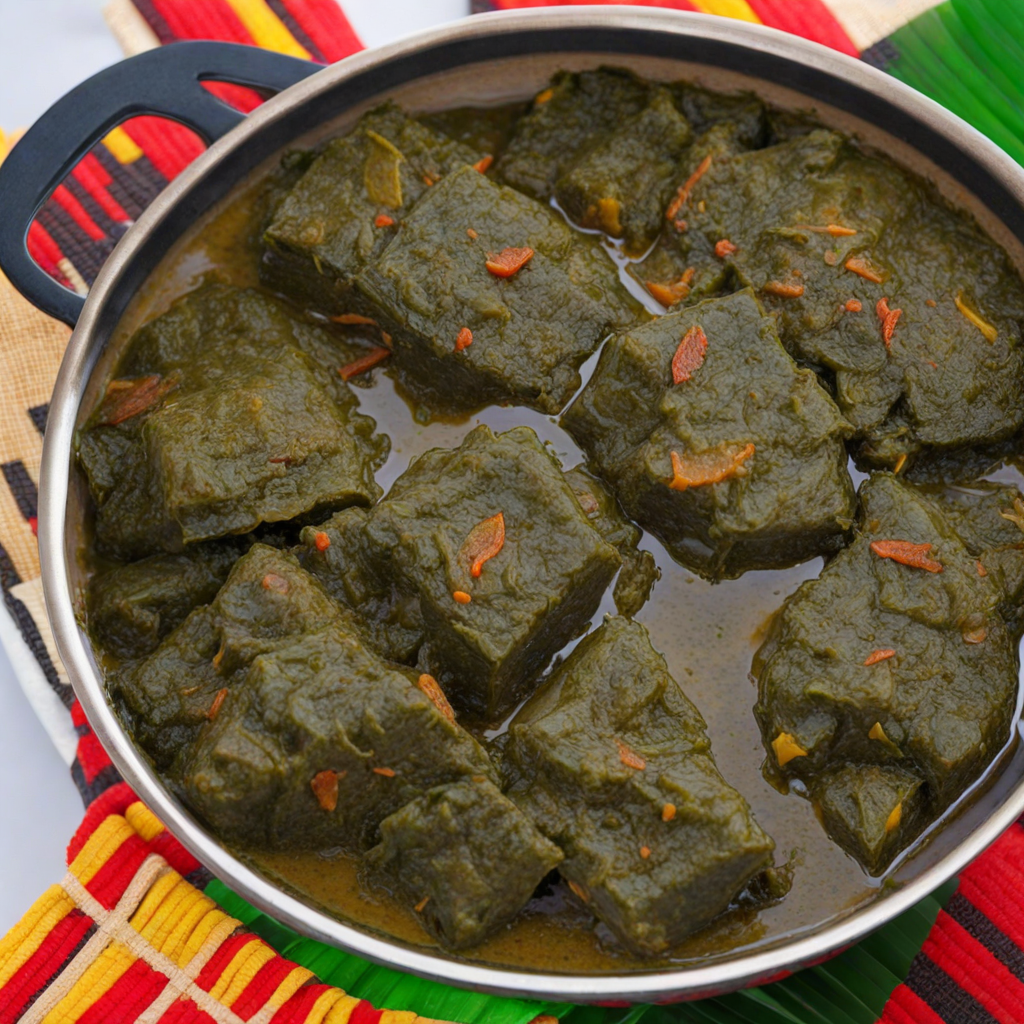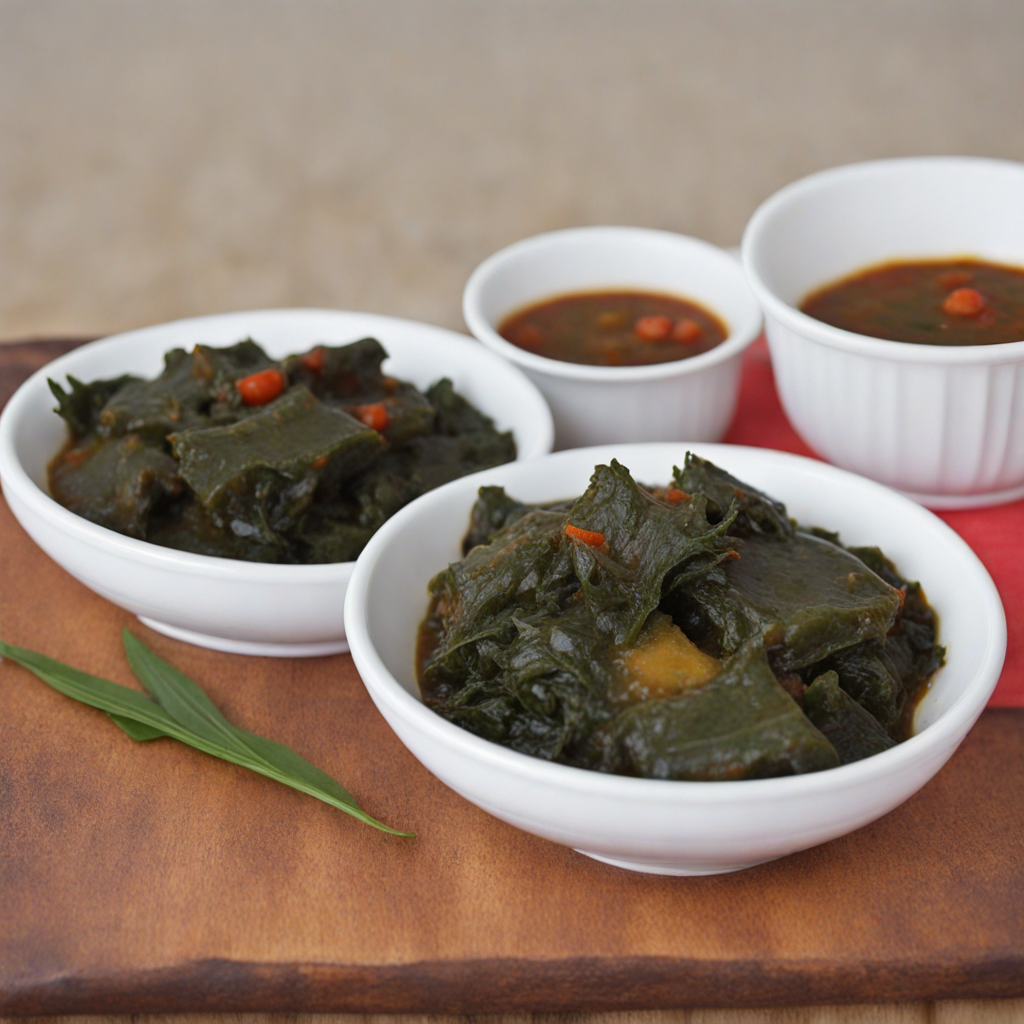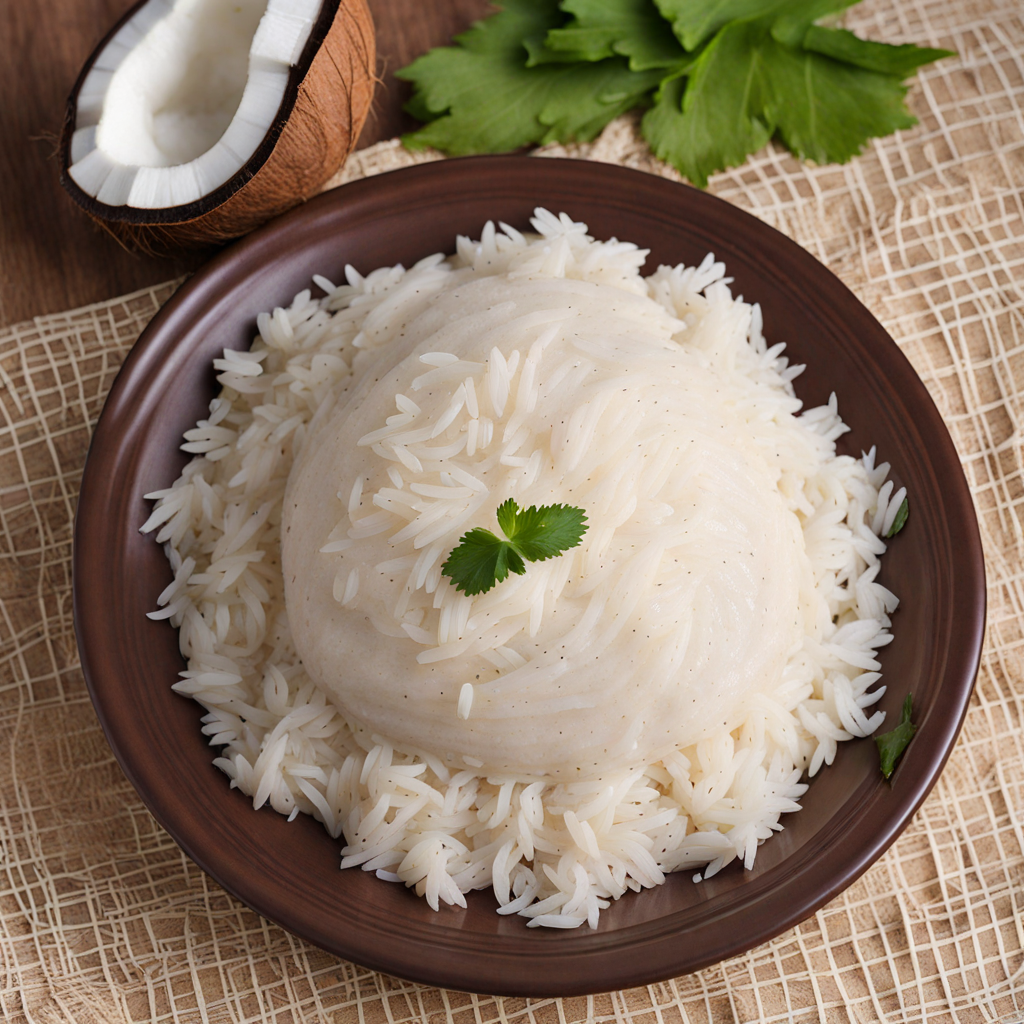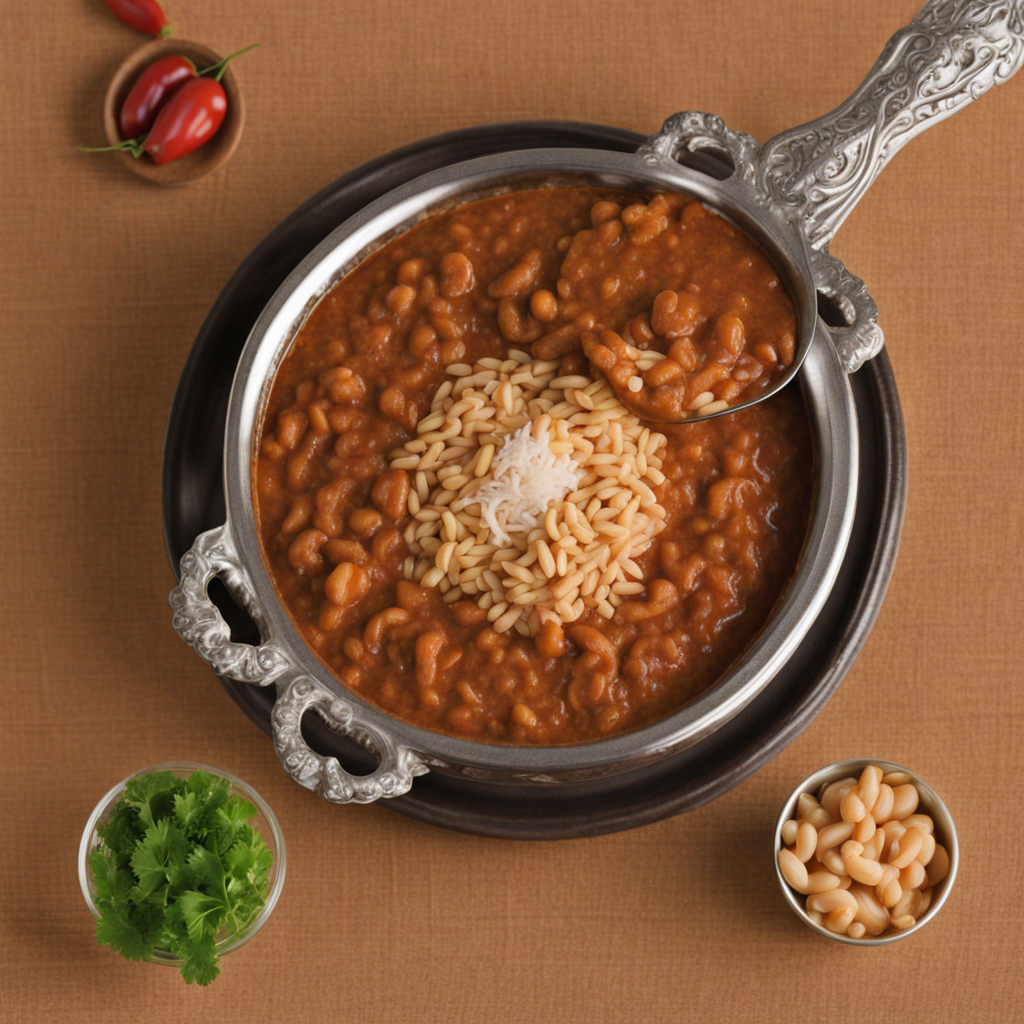Cassava Leaves Stew
Cassava Leaves Stew is a traditional dish from Guinea that showcases the rich culinary heritage of West Africa. This hearty stew is primarily made with young cassava leaves, which are known for their vibrant green color and slightly nutty flavor. The leaves are carefully harvested and prepared, often requiring a lengthy cooking process to eliminate their natural bitterness. Once properly cooked, they become tender and flavorful, forming the base of this delicious stew. The dish is typically enriched with a variety of ingredients, including ground peanuts, meat (often chicken or fish), and a blend of spices that create a delightful depth of flavor.
How It Became This Dish
Feuilles de Manioc: A Culinary Journey from Guinea Origin and Historical Context Feuilles de manioc, or cassava leaves, have deep roots in the culinary traditions of Guinea and other parts of West Africa. The cassava plant (Manihot esculenta), native to South America, was brought to Africa by Portuguese traders in the 16th century. It thrived in the tropical and subtropical climates of West Africa, eventually becoming a staple food source due to its resilience in poor soil conditions and its ability to withstand drought. In Guinea, cassava has become more than just a food crop; it is entwined with the agricultural and culinary identity of the region. The leaves of the cassava plant, often discarded in other cultures, are recognized in Guinea for their nutritional and culinary value. Feuilles de manioc are rich in proteins, vitamins, and minerals, making them a vital component of the local diet, particularly in rural areas where food security can be a concern. Cultural Significance The preparation and consumption of feuilles de manioc hold significant cultural weight in Guinea. They are often prepared in various ways, showcasing the ingenuity of local culinary practices. Traditionally, the leaves are harvested from the cassava plant, dried or cooked, and then incorporated into stews, soups, or served as a side dish. The leaves are often pounded or finely chopped before cooking, allowing their flavors to meld seamlessly with other ingredients. Feuilles de manioc are frequently cooked with groundnut (peanut) paste, palm oil, and spices, creating a rich, savory dish that reflects the flavors of the region. It is commonly served with rice or fufu, which is a starchy side made from cassava or plantains. This combination not only nourishes the body but also fosters community and togetherness during meals, reinforcing the social fabric of Guinean society. In many Guinean households, the preparation of feuilles de manioc is often a communal activity. Family members gather to harvest the leaves, prepare the ingredients, and cook together, which strengthens familial bonds and preserves culinary traditions. This communal aspect of food preparation is crucial in a culture where sharing meals is a significant gesture of hospitality and friendship. Development Over Time The culinary use of feuilles de manioc has evolved alongside Guinea’s sociopolitical landscape. During the colonial period, the introduction of new foods and cooking methods by French colonizers led to a fusion of culinary practices. While traditional dishes remained prevalent, there was an incorporation of foreign spices and techniques, which influenced how feuilles de manioc were prepared. Post-independence in 1958, Guinea experienced a resurgence of interest in indigenous foods, spurred by a nationalistic movement that encouraged the celebration of local culture and cuisine. Chefs and home cooks alike began to experiment with traditional ingredients like cassava leaves, embracing their versatility and nutritional benefits. The rise of local markets further facilitated access to fresh cassava leaves, making it easier for families to incorporate them into their diets. In contemporary Guinea, feuilles de manioc continue to play a vital role in the culinary landscape. They are now featured in restaurants and food stalls, often prepared in traditional styles or with modern twists. The popularity of this dish has also been amplified by the growing global interest in African cuisine, leading to its introduction in international food festivals and culinary showcases. Chefs from Guinea are now advocating for the use of cassava leaves in fine dining, highlighting their flavor profile and nutritional qualities to a broader audience. Nutritional Importance Beyond their culinary appeal, feuilles de manioc boast impressive nutritional benefits. They are rich in dietary fiber, vitamins A and C, calcium, and iron, making them an essential food for boosting health and preventing malnutrition, especially in vulnerable populations. As awareness grows around the importance of incorporating leafy greens into one’s diet, the nutritional profile of feuilles de manioc has gained recognition beyond Guinea, sparking interest in their potential as a superfood. The leaves are often dried and ground into a powder, allowing for preservation and year-round use. This method not only extends the shelf life of the leaves but also creates a versatile ingredient that can be incorporated into various dishes, demonstrating the resourcefulness of Guinean cooks. Conclusion Feuilles de manioc stand as a testament to the resilience and creativity of Guinean cuisine. They embody the spirit of a culture that values community, tradition, and the bounty of the land. As the world becomes more interconnected, the culinary practices surrounding feuilles de manioc represent an opportunity for cross-cultural exchange, fostering appreciation for the diverse flavors and histories that shape our global food landscape. In a world increasingly characterized by fast food and convenience, the story of feuilles de manioc serves as a reminder of the importance of preserving culinary heritage and promoting sustainable practices. As Guineans continue to celebrate and innovate around this humble yet nutritious ingredient, they not only honor their past but also pave the way for future generations to appreciate the rich tapestry of their culinary traditions. Through the lens of feuilles de manioc, we can better understand the profound connection between food, culture, and community, and the vital role that traditional foods play in shaping our identities.
You may like
Discover local flavors from Guinea







